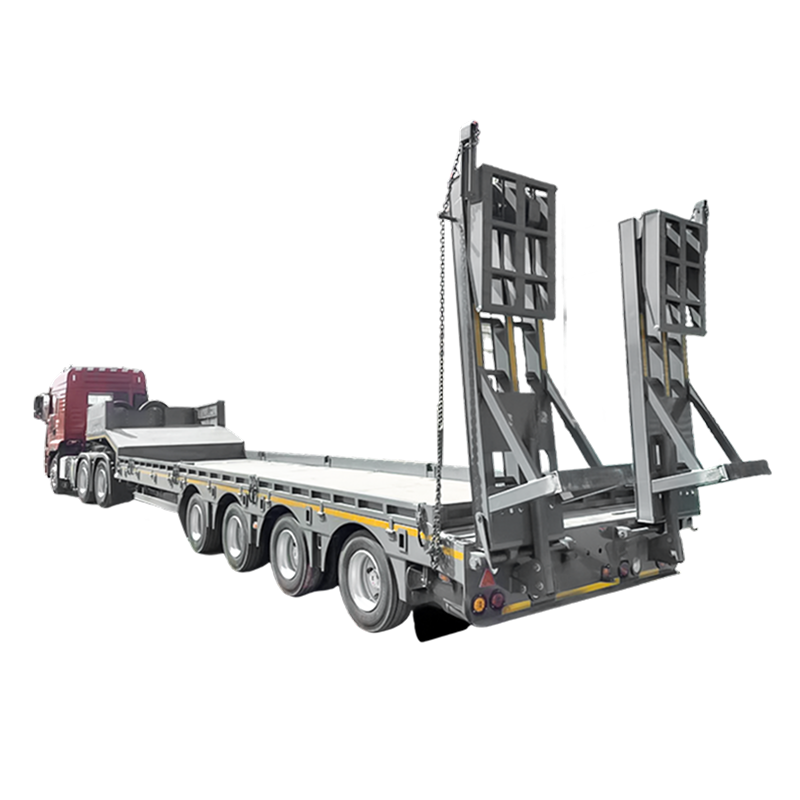


Four-axle low flat semi-trailer
Describe
The Gooseneck Traction Pin At The Front Is Connected To The Traction Saddle Of The Tractor, The Middle Is The Lowest Cargo Platform Area, And The Rear End Is The Wheel Frame And Wheels. This Design Effectively Reduces The Center Of Gravity Of The Vehicle, Giving It Superior Transit Ability When Transporting Very Tall Loads And Passing Overhead Obstacles.
In Terms Of Load Capacity, The Six-Axis Design Gives It A Strong Bearing Performance, Generally Can Carry Tens Of Tons Or Even Nearly 100 Tons Of Heavy Cargo, Can Easily Cope With Such As Heavy Vehicles, Construction Machinery, Large-Scale Power Plant Equipment And Other Transportation Tasks. Its Frame Is Mostly Made Of High-Strength Steel, The Longitudinal Beam Is Stepped, The Section Is I-Shaped, To Ensure High Stiffness And High Strength. It Is Equipped With A Three-Axis Balanced, Two-Axis Balanced Or Rigid Suspension, And A Mass Balance Block Is Arranged Between The Front And Rear Leaf Springs To Balance The Force On Each Axis, Further Improving The Driving Stability And Carrying Capacity Of The Vehicle.
When Loading Mechanical Equipment To The Car, It Is Usually Operated From The Rear End Of The Semi-Trailer, Which Can Be Moved From The Rear Wheel Frame, Or The Method Of Removing The Wheel And Then Fixing The Equipment. With These Characteristics, The Six-Axis Low-Plate Semi-Trailer Plays A Key Role In The Field Of Highway Construction, Large-Scale Engineering Equipment Transfer And Other Fields, And Becomes An Indispensable Means Of Transport For Heavy-Duty Logistics With Efficient And Safe Transportation Performance.
Application
Support Customization
Wide Range Of Use
Long Service Life
Specification
| name | Four-axle low flat semi-trailer |
| Deadweight capacity | 100-120 T |
| axle | 4 |
| suspension | Heavy mechanical spring suspension |
| tyre | 16 |
| Gear tooth | JOST |
| Brake system | WABCO |



